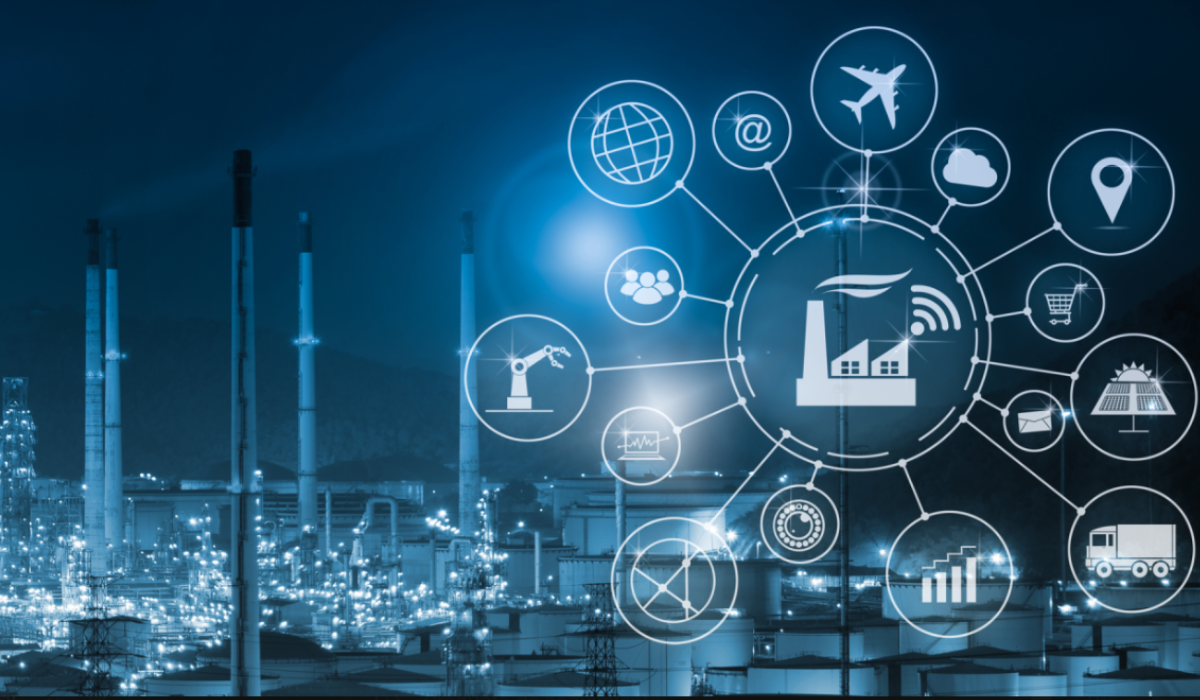Digital Twins: How Do They Reduce Ecological Footprint and Promote Sustainability?
In today’s era, sustainability is not just a trend but an imperative necessity for business survival and the preservation of the planet. Companies are continually seeking ways to reduce their ecological footprint and adopt more sustainable practices. One of the emerging technologies revolutionizing this field is digital twins.

This tool not only enhances productivity but also promotes environmental care by reducing carbon footprints. Join us in exploring how digital twins are making a significant difference in business sustainability:
Digital Twins and Sustainability: A Powerful Synergy
Digital twins are virtual replicas of physical processes, products, or systems that allow companies to monitor, simulate, and optimize their operations in real time. This advanced technology not only improves operational efficiency but also plays a crucial role in reducing environmental impact.
Monitoring and Optimizing Energy Performance
One of the greatest benefits of digital twins is their ability to monitor and optimize an organization’s energy consumption. By collecting real-time data, digital twins enable companies to adjust their processes to reduce energy waste. For example, in the manufacturing sector, digital twins can identify machines that consume more energy than necessary and suggest adjustments to improve their efficiency.
This continuous monitoring capability not only decreases energy consumption but also reduces carbon footprints by minimizing emissions generated by the unnecessary use of energy resources, contributing to a more sustainable future.
Optimization of Resource Usage
In addition to improving energy efficiency, digital twins are crucial for optimizing the use of other resources such as water and materials. By providing a detailed view of every aspect of the production process, digital twins help identify areas where resources are being underutilized or wasted. This allows companies to implement specific improvements to maximize efficiency in the use of these resources.
Reduction of Waste and Emissions
One of the main challenges for any company committed to sustainability is the reduction of waste and emissions. Digital twins facilitate this goal by allowing companies to simulate their processes in a virtual environment before implementing them in the real world.
This means that inefficiencies can be identified and corrected before they cause a negative impact.For example, by simulating a manufacturing process, digital twins can identify points where unnecessary waste is generated.By proactively addressing these issues, companies can reduce their waste production while simultaneously minimizing pollutant emissions.Improvement of Predictive MaintenancePredictive maintenance is another area where digital twins demonstrate their value in terms of sustainability.https://foundtech.me/importante-mantenimiento-predictivo-en-negocios/By predicting equipment failures before they occur, digital twins enable more efficient maintenance, reducing unplanned downtime and, consequently, energy consumption.In industries like manufacturing or transportation, where downtime can have a high environmental and economic cost, predictive maintenance based on digital twins is essential.By optimizing the use of equipment and minimizing unnecessary resource consumption, companies can significantly reduce their ecological footprint.Examples of Digital Twins in SustainabilityDigital twins are being adopted across a wide range of industries, each with its own challenges and opportunities in terms of sustainability.Next, we explore some examples of how this technology is transforming key sectors.Construction: Energy Efficiency and Waste Reduction
In the construction industry, digital twins are used to optimize building design, reducing waste and improving energy efficiency.By simulating different designs and materials, architects can identify the most sustainable and cost-effective solutions.This not only reduces waste generated during construction but also improves the energy performance of buildings throughout their lifecycle.Manufacturing: Sustainable Production ProcessesIn the manufacturing sector, digital twins enable the optimization of production processes, reducing energy and water consumption, and minimizing waste generation.This optimization not only enhances productivity but also supports environmental care by reducing the ecological footprint of production.Smart Cities: Sustainable Resource ManagementIn smart cities, digital twins are used to optimize traffic management, public lighting, and waste collection.https://www.repsol.com/es/energia-futuro/tecnologia-innovacion/smart-cities/index.cshtmlThis reduces energy consumption and emissions, contributing to a lower ecological footprint in urban areas.Additionally, the use of digital twins in urban planning promotes the development of more sustainable and livable cities.Transportation: Efficient Routes and Lower EmissionsIn the transportation industry, digital twins optimize transport routes, reduce fuel consumption and emissions, and promote the use of electric vehicles.This not only improves productivity but also significantly contributes to reducing the ecological footprint of transportation.Key Considerations for Implementing Digital Twins with a Sustainable FocusTo fully leverage the benefits of digital twins in terms of sustainability, companies must consider some key aspects.Incorporation of Sustainability Metrics: By integrating sustainability metrics alongside production metrics in a digital twin, companies can gain a comprehensive view of their environmental and economic impact.This allows for informed decision-making.Triple Bottom Line of Sustainability: The development of digital twins for cities and large industrial projects must consider the triple bottom line of sustainability: environmental, social, and economic.By balancing these three aspects, companies can ensure that their operations are not only efficient and profitable but also responsible and sustainable.Digital twins are transforming the way companies approach sustainability.By enabling precise monitoring, simulation, and optimization of processes, these twins reduce the ecological footprint, improve productivity, and foster responsible consumption.As more industries adopt this technology, we will see an even greater impact on reducing carbon footprints and promoting more effective environmental care.Are you ready to adopt digital twins in your company and contribute to a more sustainable future?color:#a2c62e!important;JOIN THE NEW REALITY!Digital twins are optimizing the supply chain through simulations and data analysis.Optional This means that inefficiencies can be identified and corrected before they cause a negative impact.
For example, by simulating a manufacturing process, digital twins can identify points where unnecessary waste is generated. By proactively addressing these issues, companies can reduce their waste production while simultaneously minimizing pollutant emissions.
Improvement of Predictive Maintenance
Predictive maintenance is another area where digital twins demonstrate their value in terms of sustainability. By predicting equipment failures before they occur, digital twins enable more efficient maintenance, reducing unplanned downtime and, consequently, energy consumption.
In industries like manufacturing or transportation, where downtime can have a high environmental and economic cost, predictive maintenance based on digital twins is essential. By optimizing the use of equipment and minimizing unnecessary resource consumption, companies can significantly reduce their ecological footprint.
Examples of Digital Twins in Sustainability
Digital twins are being adopted across a wide range of industries, each with its own challenges and opportunities in terms of sustainability. Next, we explore some examples of how this technology is transforming key sectors.
Construction: Energy Efficiency and Waste Reduction
In the construction industry, digital twins are used to optimize building design, reducing waste and improving energy efficiency.By simulating different designs and materials, architects can identify the most sustainable and cost-effective solutions.This not only reduces waste generated during construction but also improves the energy performance of buildings throughout their lifecycle.Manufacturing: Sustainable Production ProcessesIn the manufacturing sector, digital twins enable the optimization of production processes, reducing energy and water consumption, and minimizing waste generation.This optimization not only enhances productivity but also supports environmental care by reducing the ecological footprint of production.Smart Cities: Sustainable Resource ManagementIn smart cities, digital twins are used to optimize traffic management, public lighting, and waste collection.https://www.repsol.com/es/energia-futuro/tecnologia-innovacion/smart-cities/index.cshtmlThis reduces energy consumption and emissions, contributing to a lower ecological footprint in urban areas.Additionally, the use of digital twins in urban planning promotes the development of more sustainable and livable cities.Transportation: Efficient Routes and Lower EmissionsIn the transportation industry, digital twins optimize transport routes, reduce fuel consumption and emissions, and promote the use of electric vehicles.This not only improves productivity but also significantly contributes to reducing the ecological footprint of transportation.Key Considerations for Implementing Digital Twins with a Sustainable FocusTo fully leverage the benefits of digital twins in terms of sustainability, companies must consider some key aspects.Incorporation of Sustainability Metrics: By integrating sustainability metrics alongside production metrics in a digital twin, companies can gain a comprehensive view of their environmental and economic impact.This allows for informed decision-making.Triple Bottom Line of Sustainability: The development of digital twins for cities and large industrial projects must consider the triple bottom line of sustainability: environmental, social, and economic.By balancing these three aspects, companies can ensure that their operations are not only efficient and profitable but also responsible and sustainable.Digital twins are transforming the way companies approach sustainability.By enabling precise monitoring, simulation, and optimization of processes, these twins reduce the ecological footprint, improve productivity, and foster responsible consumption.As more industries adopt this technology, we will see an even greater impact on reducing carbon footprints and promoting more effective environmental care.Are you ready to adopt digital twins in your company and contribute to a more sustainable future?color:#a2c62e!important;JOIN THE NEW REALITY!Digital twins are optimizing the supply chain through simulations and data analysis.Optional
In the construction industry, digital twins are used to optimize building design, reducing waste and improving energy efficiency. By simulating different designs and materials, architects can identify the most sustainable and cost-effective solutions. This not only reduces waste generated during construction but also improves the energy performance of buildings throughout their lifecycle.
Manufacturing: Sustainable Production Processes
In the manufacturing sector, digital twins enable the optimization of production processes, reducing energy and water consumption, and minimizing waste generation. This optimization not only enhances productivity but also supports environmental care by reducing the ecological footprint of production.
Smart Cities: Sustainable Resource Management
In smart cities, digital twins are used to optimize traffic management, public lighting, and waste collection. This reduces energy consumption and emissions, contributing to a lower ecological footprint in urban areas. Additionally, the use of digital twins in urban planning promotes the development of more sustainable and livable cities.
Transportation: Efficient Routes and Lower Emissions
In the transportation industry, digital twins optimize transport routes, reduce fuel consumption and emissions, and promote the use of electric vehicles. This not only improves productivity but also significantly contributes to reducing the ecological footprint of transportation.
Key Considerations for Implementing Digital Twins with a Sustainable Focus
To fully leverage the benefits of digital twins in terms of sustainability, companies must consider some key aspects.
- Incorporation of Sustainability Metrics: By integrating sustainability metrics alongside production metrics in a digital twin, companies can gain a comprehensive view of their environmental and economic impact. This allows for informed decision-making.
- Triple Bottom Line of Sustainability: The development of digital twins for cities and large industrial projects must consider the triple bottom line of sustainability: environmental, social, and economic. By balancing these three aspects, companies can ensure that their operations are not only efficient and profitable but also responsible and sustainable.
Digital twins are transforming the way companies approach sustainability. By enabling precise monitoring, simulation, and optimization of processes, these twins reduce the ecological footprint, improve productivity, and foster responsible consumption. As more industries adopt this technology, we will see an even greater impact on reducing carbon footprints and promoting more effective environmental care.
Are you ready to adopt digital twins in your company and contribute to a more sustainable future?
JOIN THE NEW REALITY!



